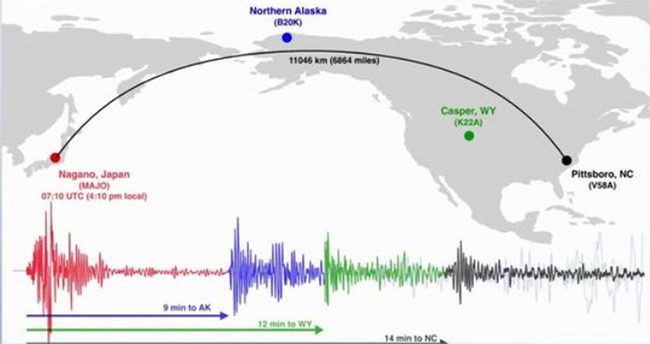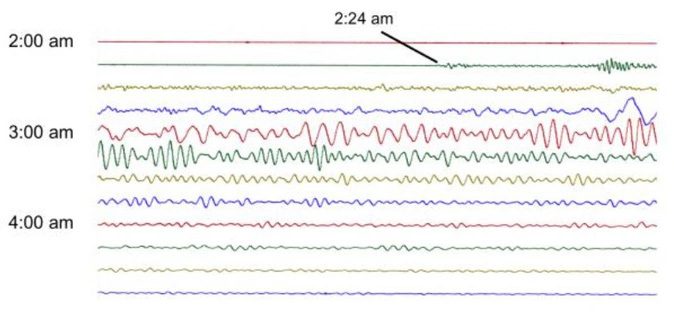A major earthquake in Japan on the afternoon of January 1, 2024, was immediately recorded by nearby seismometers, with reports coming in from around the world in the following minutes.
The earthquake occurred due to a sudden release of deformed energy at the epicenter beneath the Earth’s surface, which was immediately detected by seismometers above the epicenter.

Seismic waves transmitted from Nagano, Japan, to Pittsboro, North Carolina, USA – (Photo: WRAL).
Located nearly 10 kilometers beneath the Sea of Japan near the town of Suzu on the Noto Peninsula in Ishikawa Prefecture, seismometers also detected the seismic waves.
According to US broadcaster WRAL, seismic wave energy radiates outward in all directions and travels in pulses like ripples on water, along the surface of the Earth and through its core.
Primary waves (P waves) travel the fastest and arrive first, compressing rock in a horizontal direction.
Secondary waves (S waves) follow, causing destructive up-and-down motion.
Seismometers worldwide recorded both horizontal and vertical movements of the seismic waves.
The Incorporated Research Institutions for Seismology (IRIS) reported that the earthquake was recorded on seismometers in northern Alaska, USA, 9 minutes after the earthquake occurred in Japan.
Subsequently, the seismic waves reached Casper, Wyoming, after 12 minutes, and arrived in Pittsboro, North Carolina, after 14 minutes.

Intensity of seismic waves recorded in Pittsboro at 2:24 PM, then at 3 PM, 4 PM (local time) – (Photo: WRAL).
However, similar to waves moving from a pebble thrown into a pond, the strongest seismic waves are closest to the source. The speed of seismic waves recorded in Japan diminishes by several thousand times by the time they reach North Carolina, USA.
The movement continues after the initial shock, along the surface as well as through the Earth’s core.
Although aftershocks are always expected following a major earthquake like this, the waves in the chart below may still originate from the initial shock. During this period, the Earth vibrates like a bell, with energy reflecting from the crust and penetrating through the core.
Seismometers in Pittsboro – like those around the globe – continued to record this movement for several hours after the initial shock.


















































